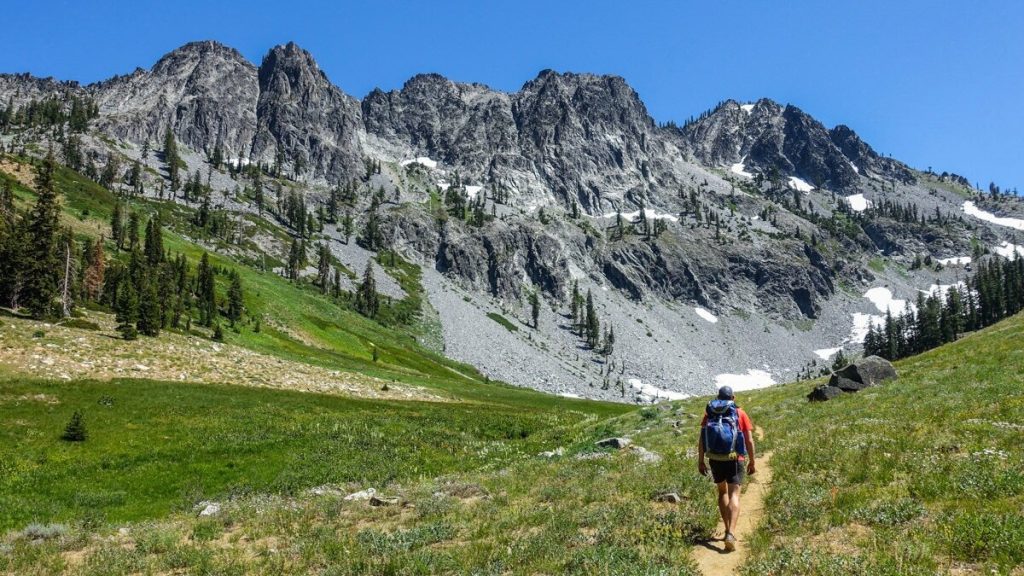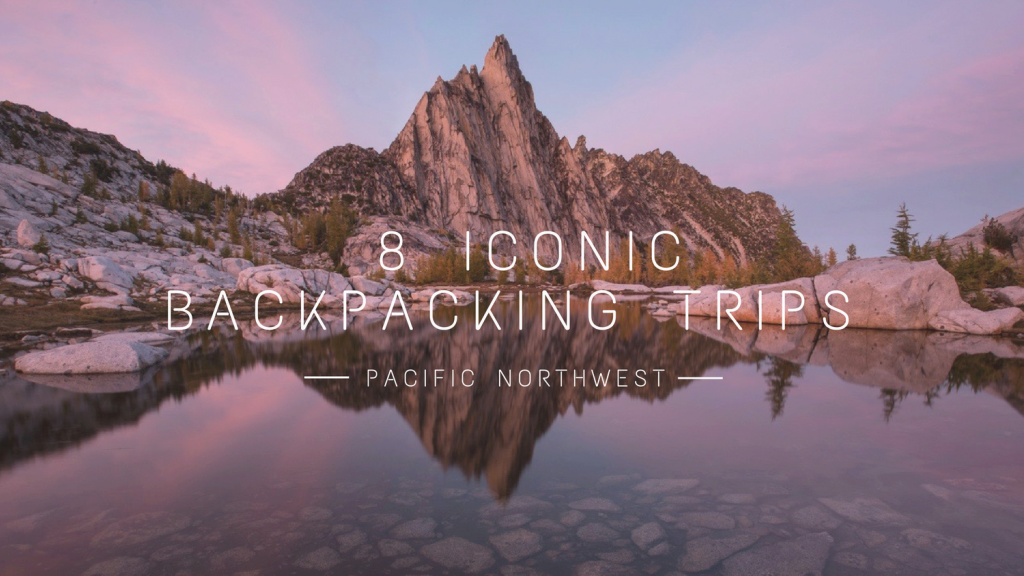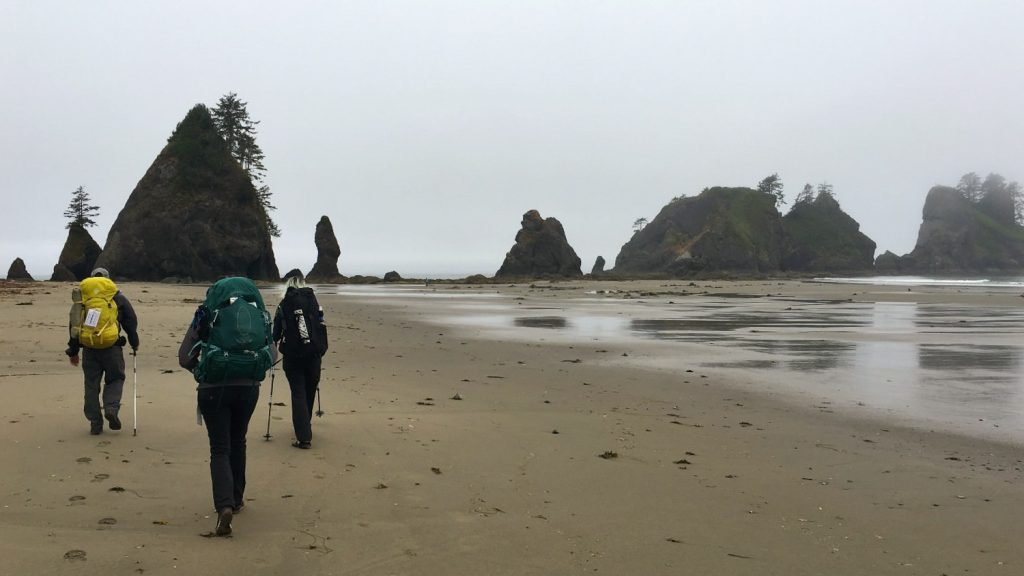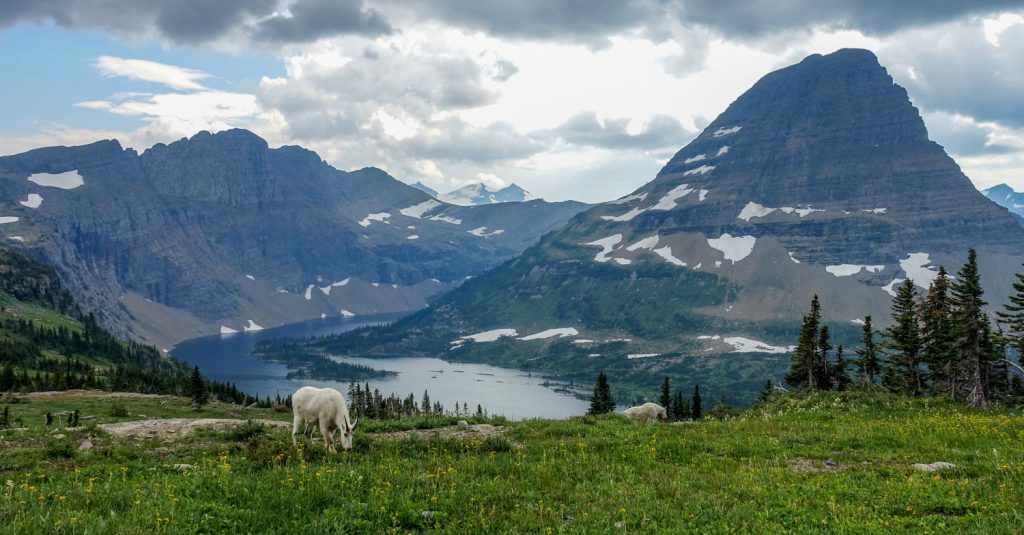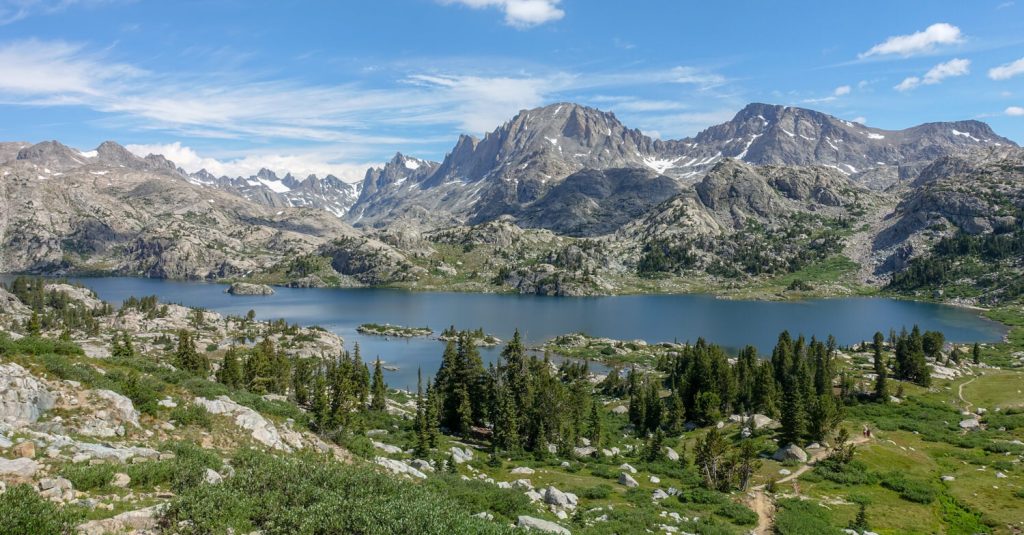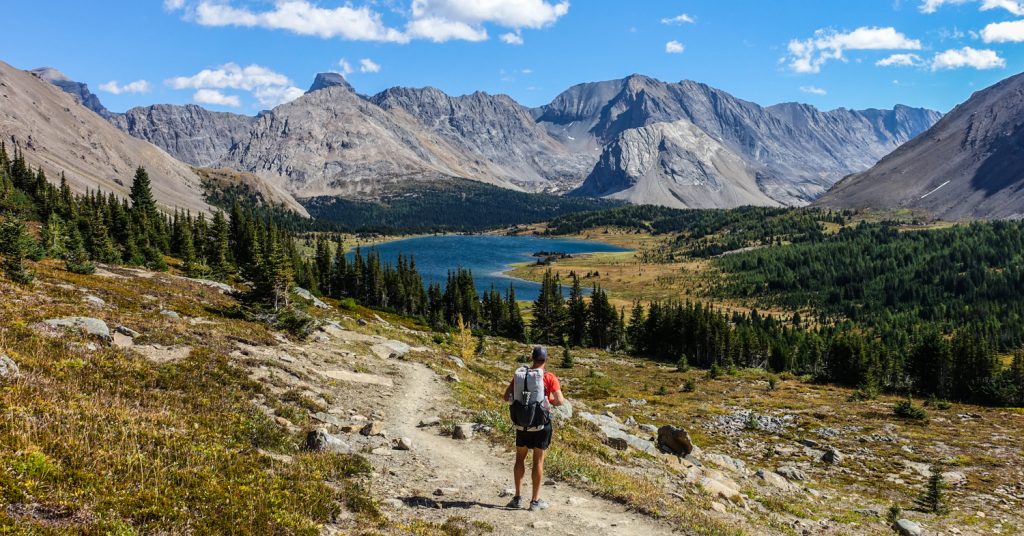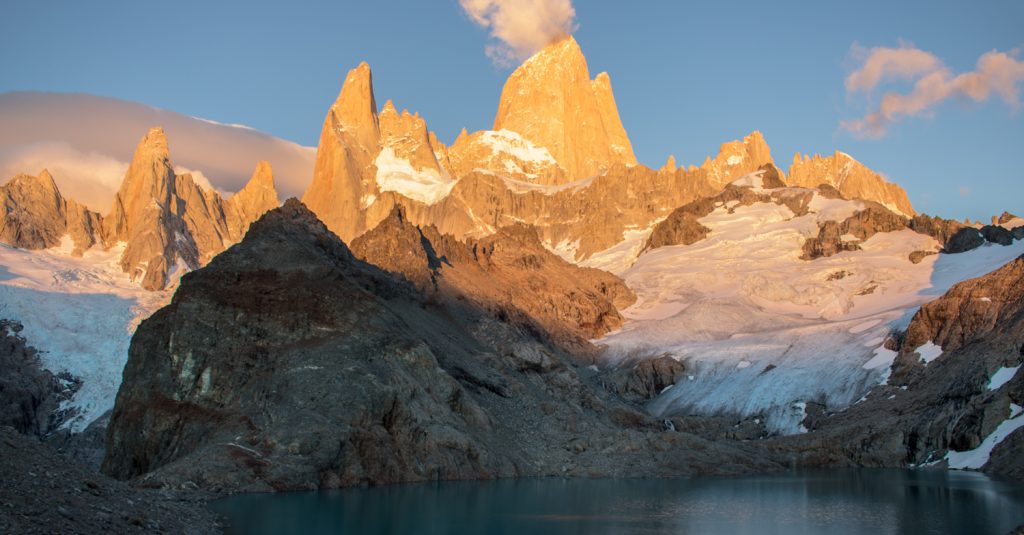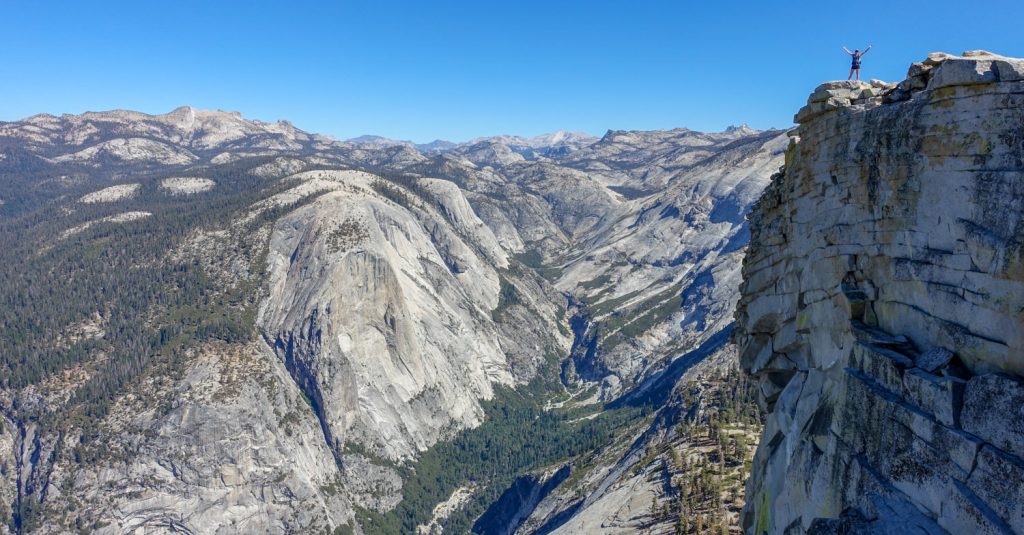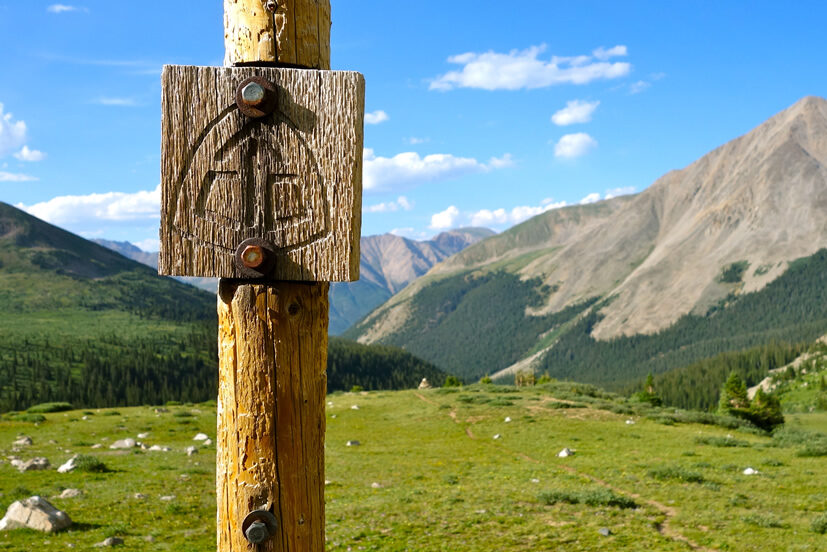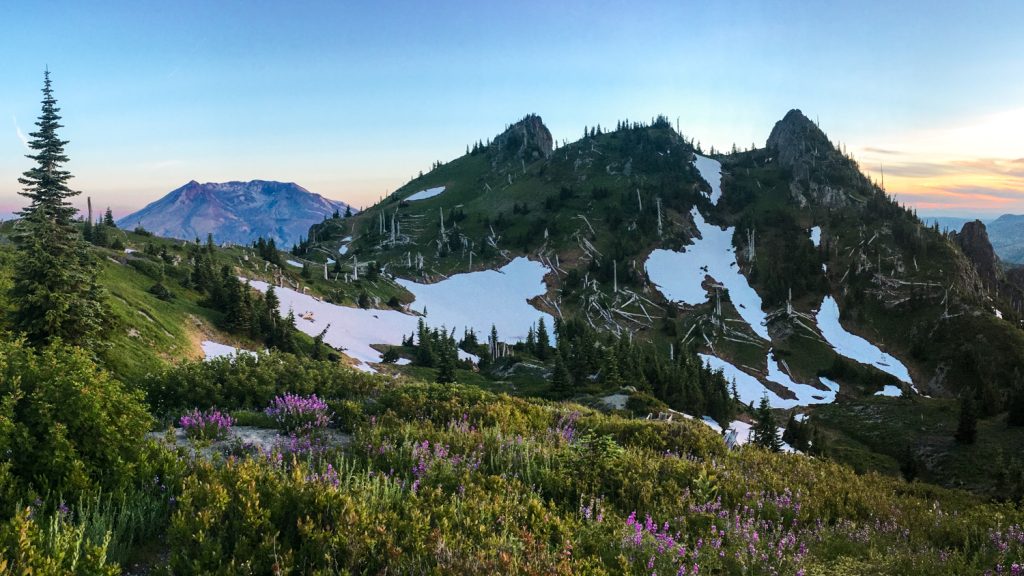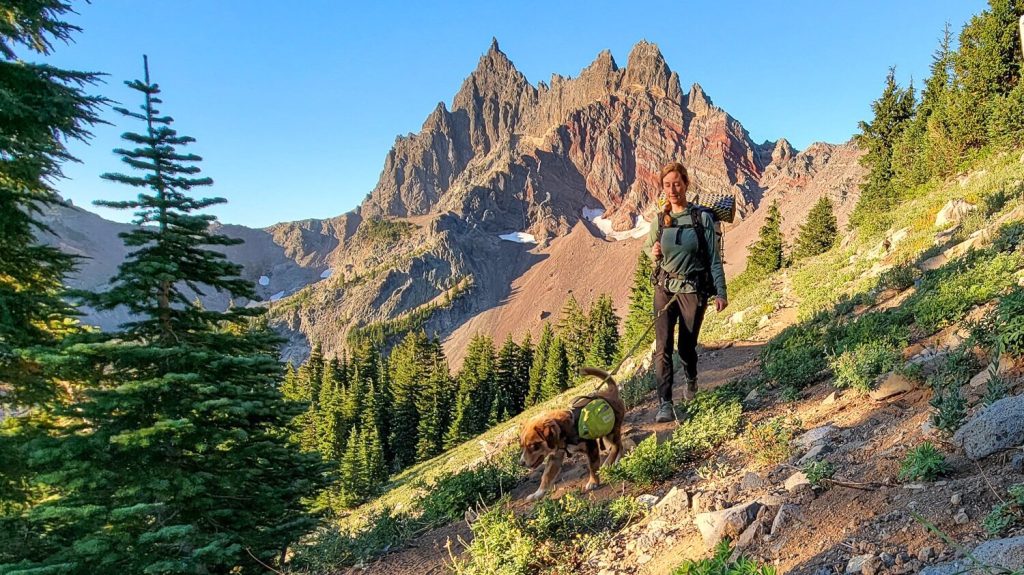
The Rogue River Trail is one of the most scenic early-season backpacking trips in the Pacific Northwest. The route traverses the north side of the Wild and Scenic section of the Rogue River from Grave Creek to Foster Bar. This portion of the river is the most remote stretch, as no roads cross the river, making it only accessible by boat or on foot.
The scenery is fantastic, with steep canyon walls, sparkling waterfalls, and deep green pools. Flora and fauna are abundant, and anglers come from around the world to fish the famed Rogue River. You won’t see too many other hikers on the trail, and there are many beautiful campsites along the way. With limited early-season backpacking options in the Pacific Northwest, the Rogue River Trail is among the best.
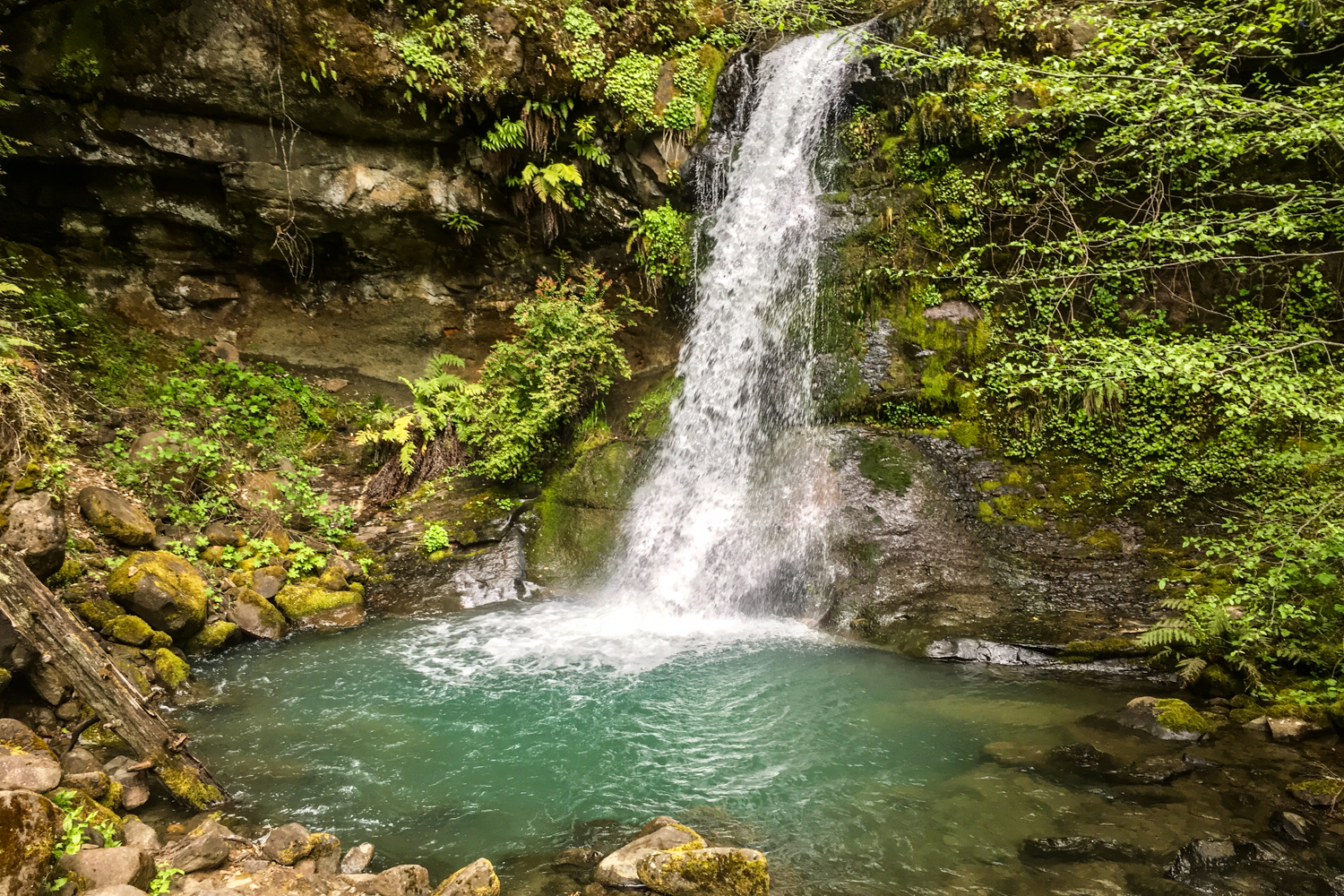
Quick Facts
- Distance: 40 miles (one way)
- Days Needed: 3-5 days
- Type: Shuttle or out-and-back
- Elevation Gain/Loss: 4,500ft / 4,950ft
- Best Travel Time: Spring and fall (April/May/Sept/Oct). Although you can hike year round, summer can get very hot.
- Permits: None
- Difficulty: Moderate
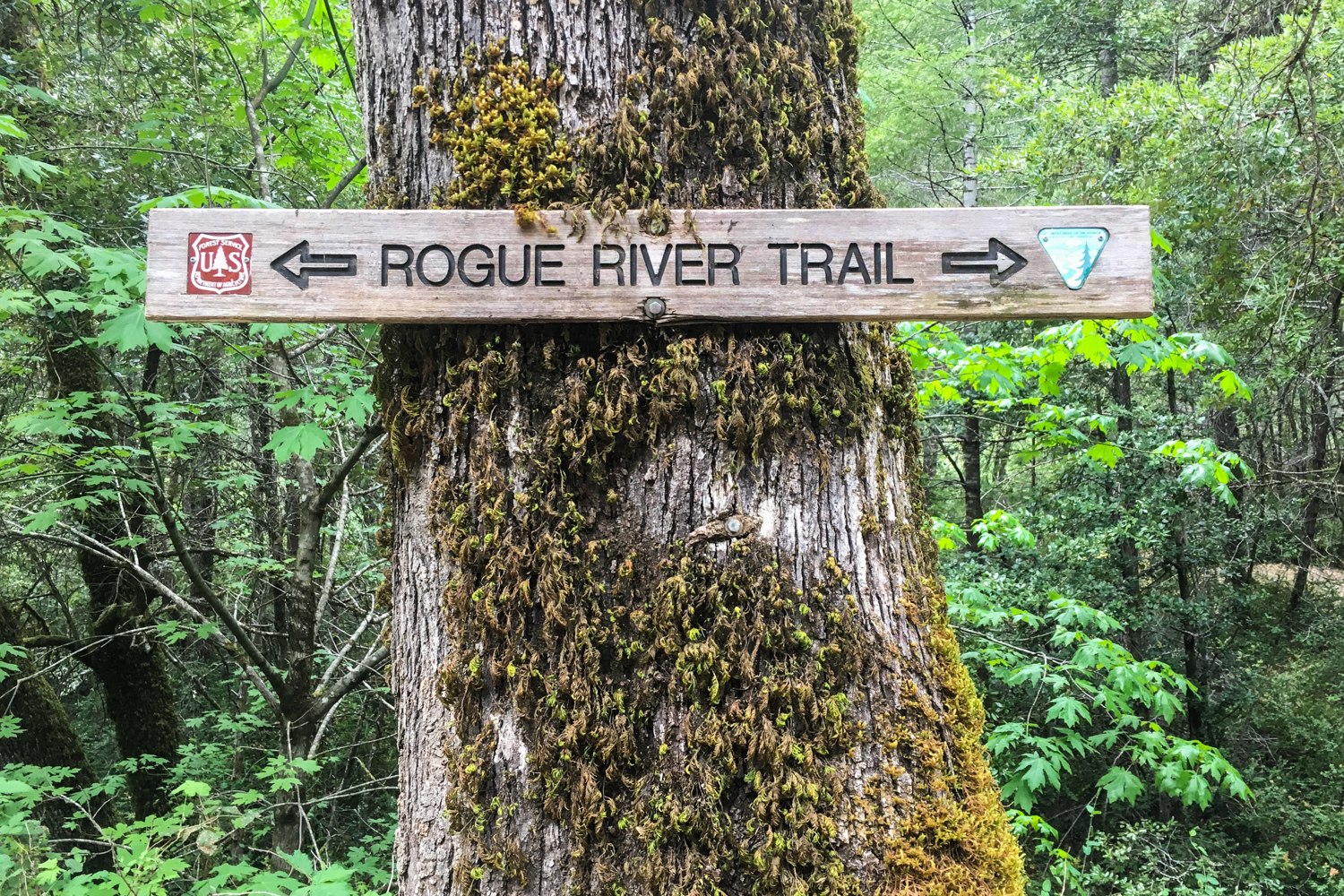
Highlights
- Spring wildflowers
- Beautiful riverside campsites
- Abundant wildlife – chance to see black bears
- Well-maintained trail
- Decent solitude
- Shuttle service options
- Wilderness lodging and river rafting trip options
Lowlights
- Abundant poison oak. Like, ridiculously abundant
- Ticks and rattlesnakes are somewhat common
- Hiking mid-summer can be dangerously hot
- There are some steep sections, but they are not too bad. It is not recommended if you have a fear of heights
- Shared use with river rafters (and jet boats on the western section)
- Expensive early-season shuttle when Bear Camp Road is closed
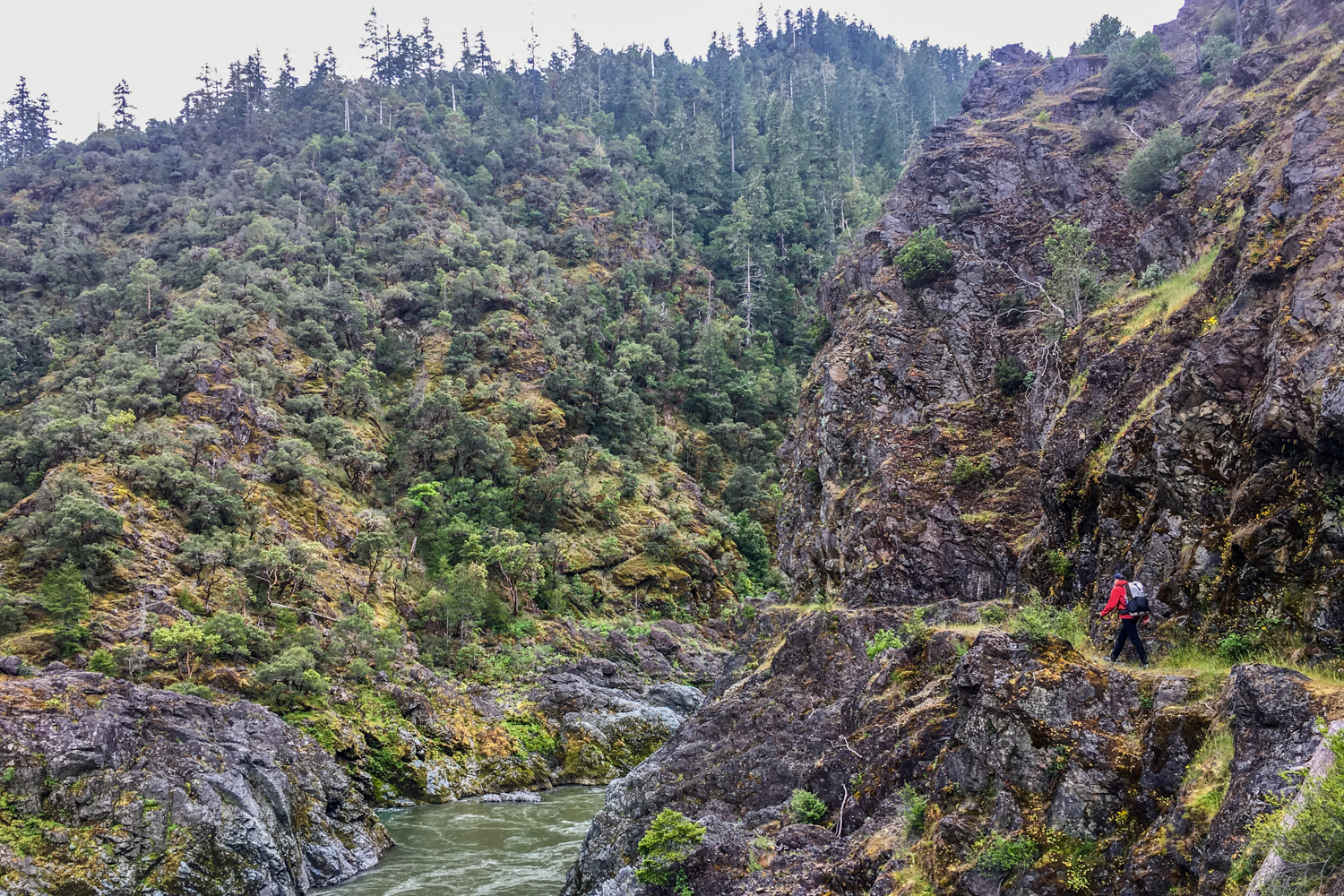
Best Time to Travel
The Rogue River Trail can technically be hiked year-round due to its low elevation. However, the best time to hike is in the spring and fall. Summer brings scorching heat into the canyon, and conditions can be dangerous if you’re not well prepared. Although this area of Oregon is generally drier than other parts of the state, it still receives a fair amount of rain (and sometimes snow) in the winter. If you decide to hike in winter, be prepared for the possibility of washouts, downed trees, and muddy trails. Also, getting a car shuttle in the winter and early spring is possible, but it’s much more expensive until the main road (Bear Camp) opens (usually mid to late May).
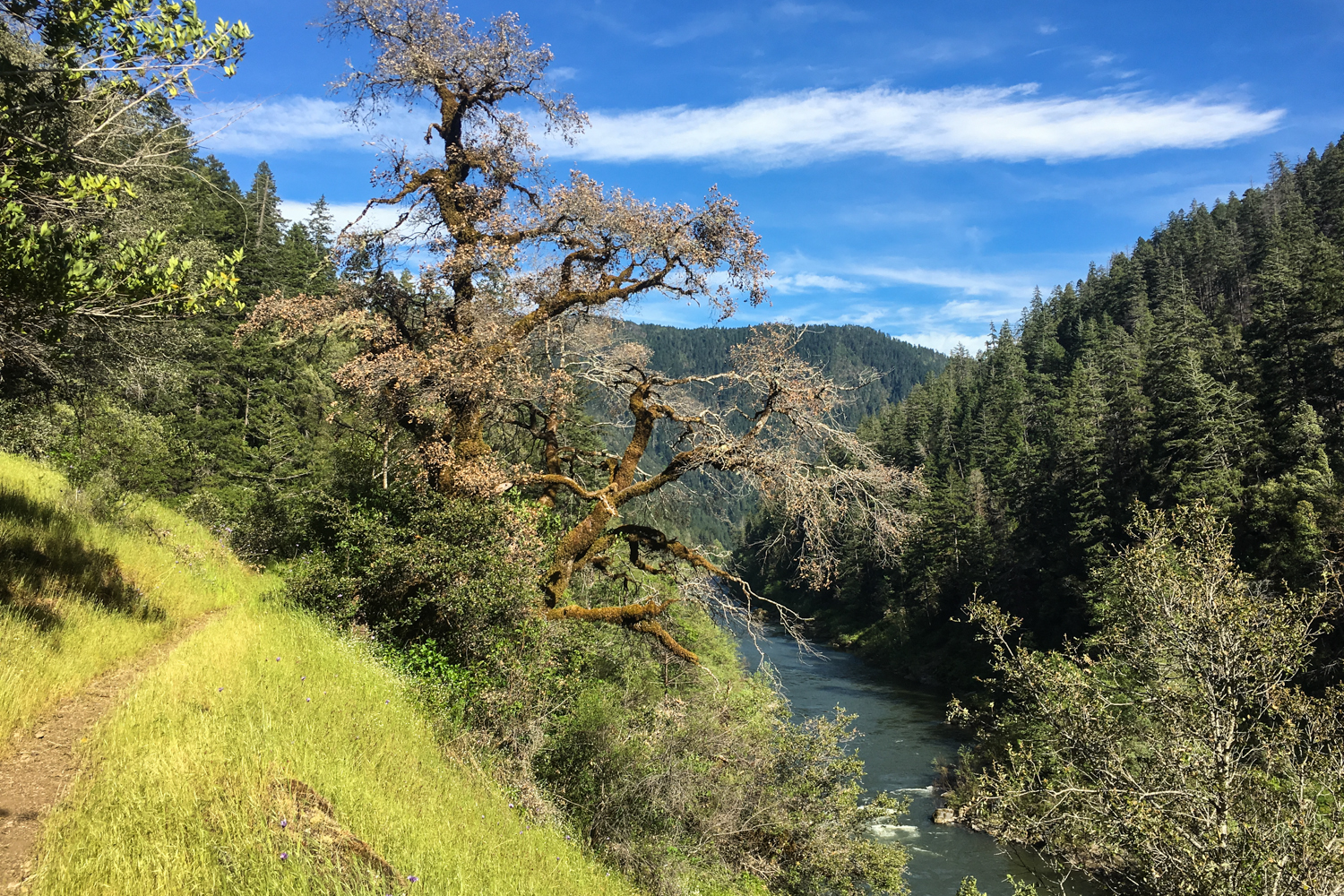
Difficulty
- Total Distance: About 40 Miles
- Total Elevation Gain/Loss: 4,500 ft / 4950 ft
- Overall Difficulty: Moderate
We rate this hike overall as moderate difficulty. Over the course of 40 miles, the trail undulates along the river with some big ups and downs. However, we consider it moderate because it’s milder than the climbing you’d see on most PNW mountain trails. The trail does have some narrow portions with steep dropoffs, so take care in these sections. As always, difficulty ratings depend on your experience, physical fitness, pack weight, & weather conditions. This is not a technically demanding hike, but like any backpacking trip, the best trips start with a great plan, self-awareness, and proper training. Brush up on your skills, and dial in your gear for a safe and enjoyable adventure on the Wild and Scenic section of the Rogue River Trail.
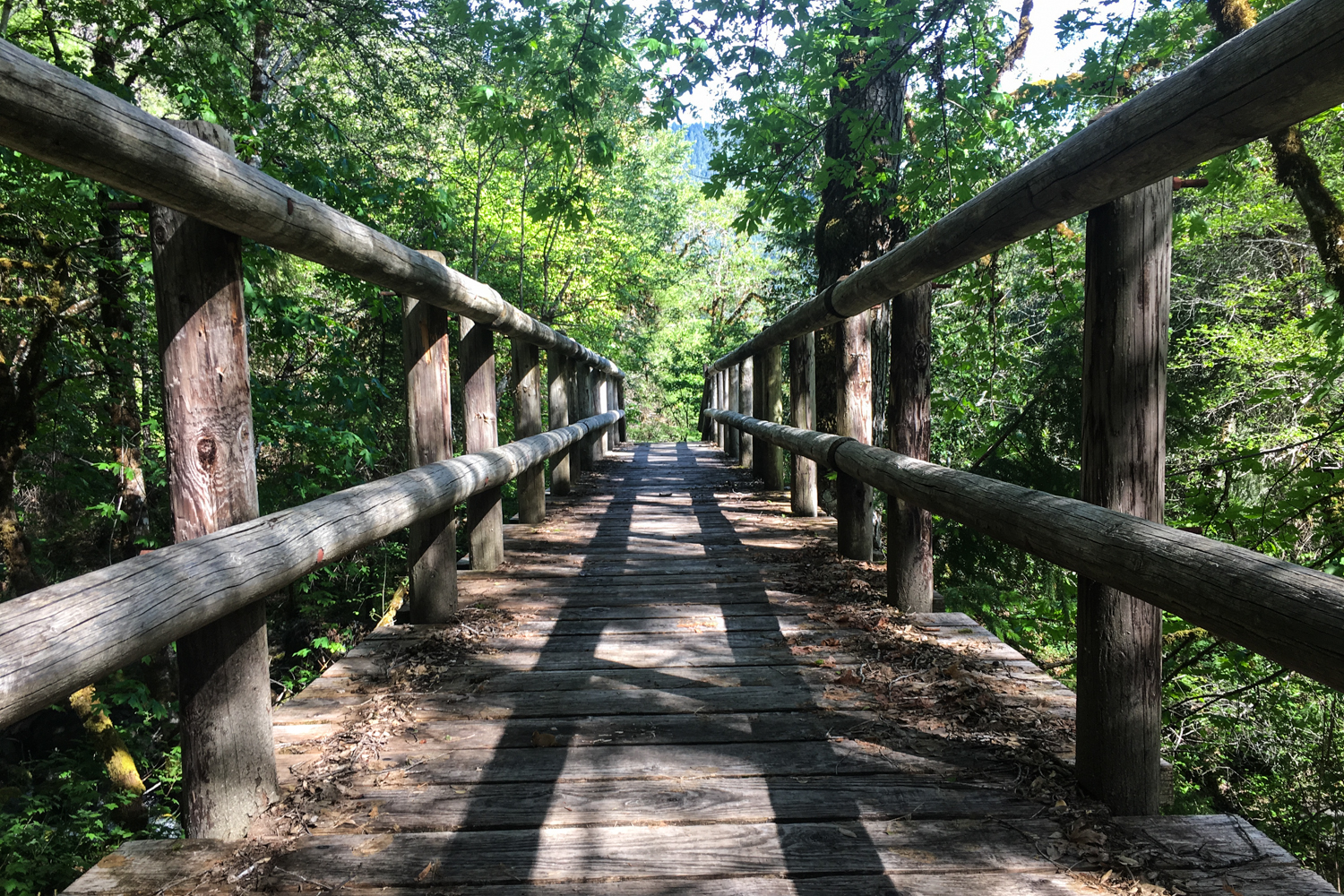
Getting There
From Portland, the Rogue River Trail is roughly a 4-hour drive south. You will take I-5 south until you reach exit 76. Head west for 15 miles towards the Grave Creek Bridge. Just past the Grave Creek Bridge is the Grave Creek Boat Ramp parking lot, the starting trailhead for this trip. There is a Rogue River Trail information sign up a small hill near the end of the parking lot, but you might not immediately see it. If you choose to arrange a shuttle service, they’ll usually pick up your car from here and drive it down to the Foster Bar Boat Launch Parking Lot (not the Foster Bar Trailhead, but very close) for you.

Trailheads
This trip guide starts at the Graves Creek Boat Ramp and ends at the Foster Bar Boat Launch parking lot. Although you can hike the Rogue River Trail in either direction, it’s most common to start at Graves Creek and hike west down the river valley.
Shuttle Options
There are several options for running a shuttle to hike this trail. Plan on it taking ~3 hours to get it all sorted out if you run your own shuttle. Here are a few ways to get to where you want to go:
- Plan an out-and-back hike from one trailhead
- Take two cars and park one at your ending trailhead
- Hire a shuttle service to pick up your car from one trailhead and drop it off at the other while you hike
- Plan the trip with another group to run a shuttle for each other’s cars. One group hikes upstream, and the other hikes downstream and finishes the hike at the car
- Hitchhike back to your car. Conversely, you can drive to the finish and then hitch to the starting trailhead. Hitching is common here because of the number of boaters who also need to run a shuttle. However, use cautious discernment before taking a lift from a stranger
Some shuttle services will pick up your car from the trailhead, and others will offer to drop you off to start your hike. With both options, the service will keep your car in a safe location while you hike and drop off your car the day you plan to hike out. A second set of car keys will be useful for this service, but there are clever ways around that if you only have one set of keys.
Prices vary depending on the time of year (due to snowpack road closures) and the company you choose. When Bear Camp Road is open, shuttle rates from popular outfitters run about $115-$140 per car (at the time of this posting). When longer shuttle routes are necessary, rates increase to around $190-$300 depending on route options.
Popular Rogue River Shuttle Companies:

Maps & Guidebooks
The Backpacking Oregon book is an excellent resource for this trail and many other trips around Oregon. Waypoints and detailed descriptions of the hike are useful for planning camping locations, side trips, and more. We highly recommend reading the BLM Rogue River Trail Guide. It provides useful logistical information, as well as ecological, historical, and geographical content as well.
The Rogue River Trail is well-maintained and marked, so off-trail navigation will most likely be unnecessary. Still, it is smart to hike with detailed maps and a quality compass (like the Suunto M-3 D Leader) whenever you go into the wilderness. We referenced a topographical map for trail mileage, water sources, and campsites. You can print the BLM map above, use this Caltopo map on your phone, and/or use the Gaia GPS phone app to navigate this trail.
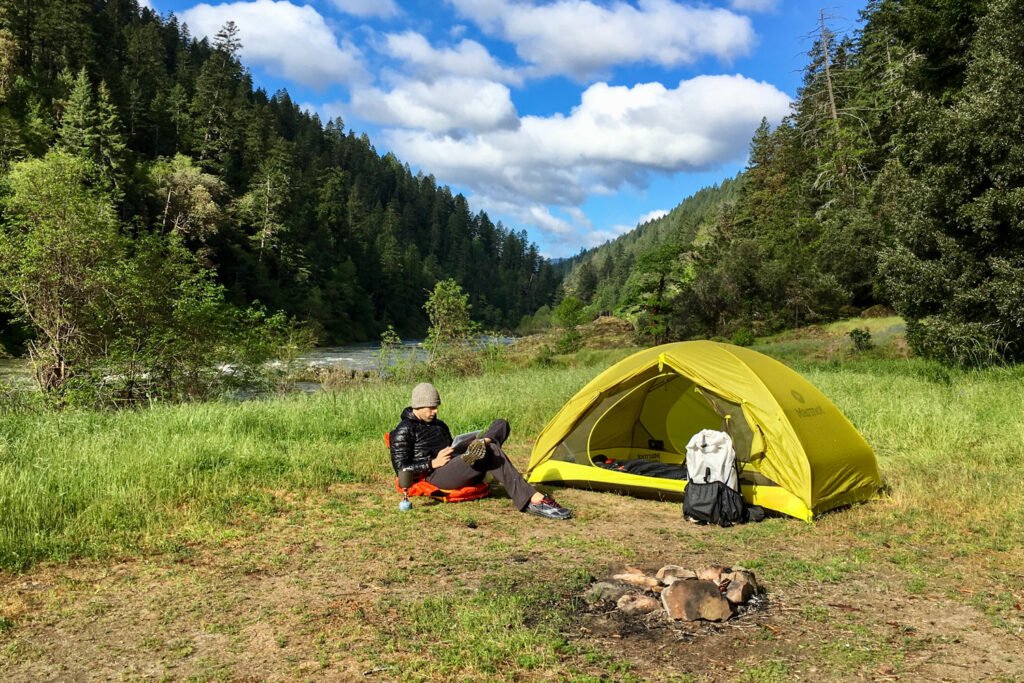
Permits & Regulations
- No permits are needed to hike the Rogue River Trail. Woo hoo!
- Check the Rogue River Forest Service page for official regulations. Some important considerations:
- Fires are prohibited within 400 feet of the river.
- Please check with the local interagency office prior to your trip to ensure there are no fire bans or trail closures. The Rogue River area is very dry, and extra precautions must be taken. With how fire seasons are trending, it’s probably best to plan on not having campfires.
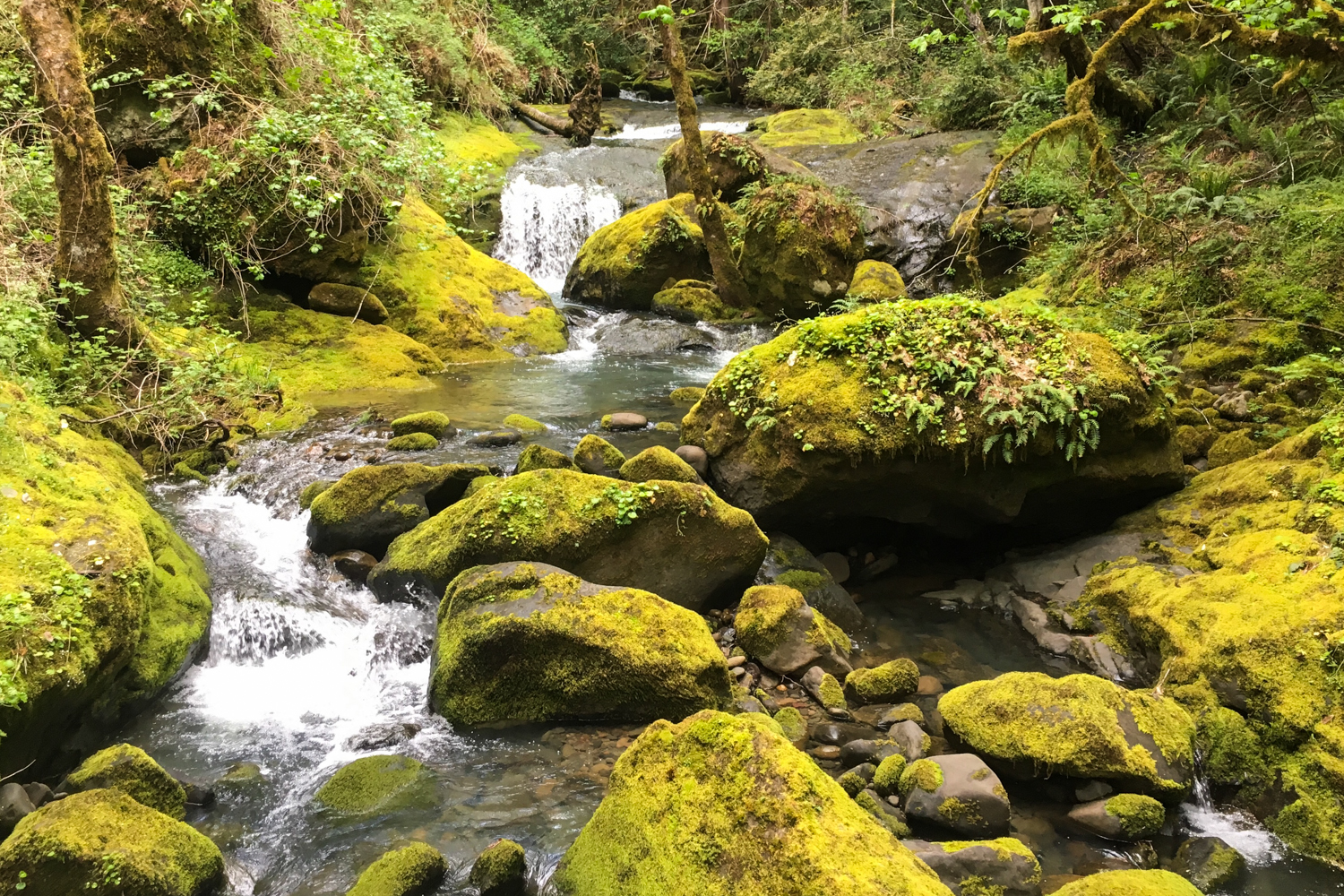
Water
Water is normally plentiful along this trail and easily accessible from small streams. It is good practice to fill your bladders and bottles to be able to get from one source to the next. Lightweight water purifiers are user-friendly and don’t bog down your pack.

Solitude
Compared to most popular PNW hiking destinations, the Rogue River Trail sees far fewer hikers, so in that sense, the solitude is excellent. That said, the Rogue River is a popular rafting location, with 20,000 boaters floating this section annually. So you may have to share some campsites with whitewater rafters during peak season. On the last 10-mile stretch of the trail (the western side), you may also hear the occasional roar of jetboats.
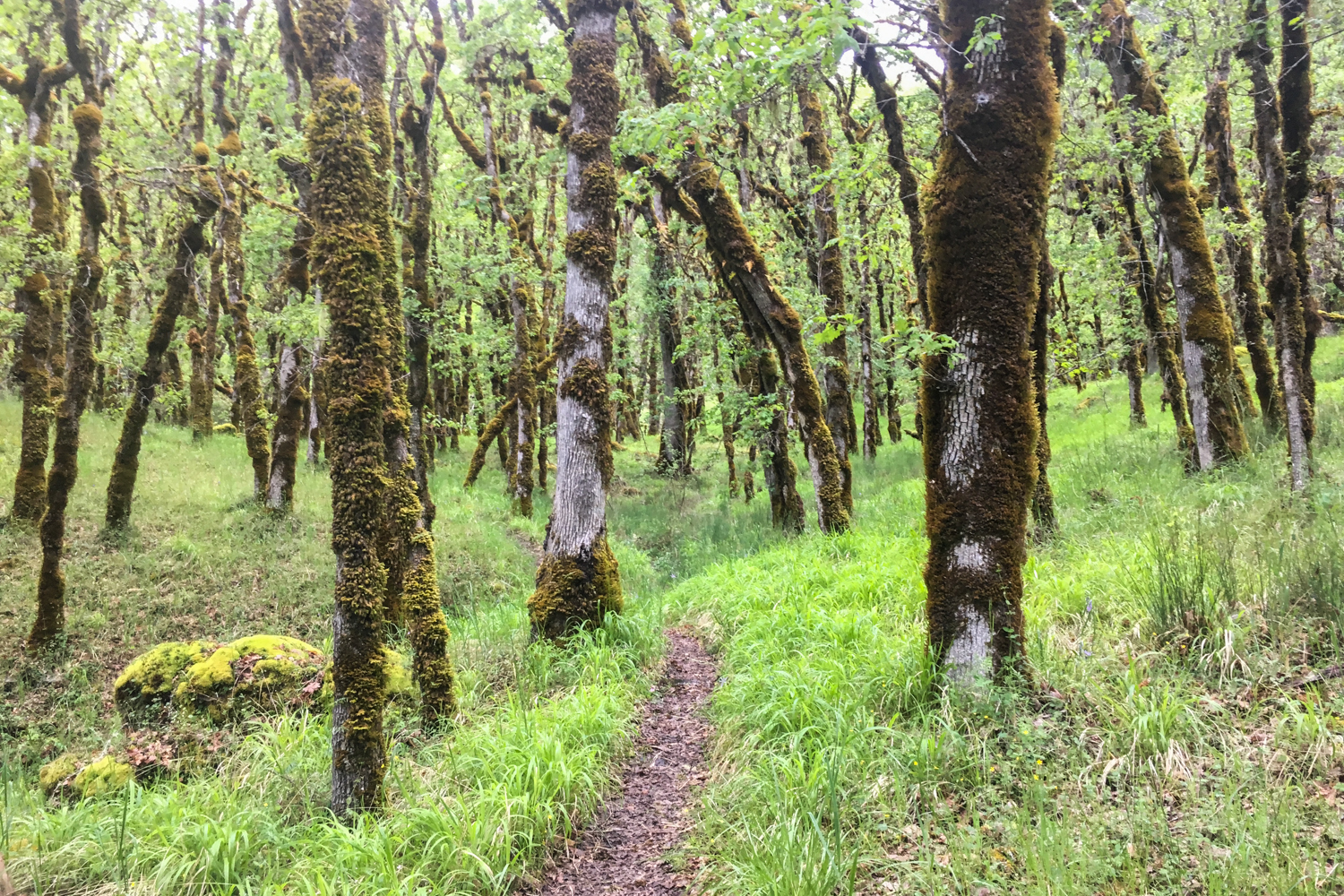
Bears & Food Storage
Black bears, trash bandits (raccoons), and other little free-loaders are common along this trail, especially on the western side. In high bear population areas, bear boxes, food hoists, and bear fences provide convenient nighttime food storage. Deeper along the trail, there aren’t bear boxes. However, it is still important to store your food properly. Watch our tutorial to learn how to hang your bear bag properly or carry a food storage container. Bear canisters and Ursacks are great storage methods and are easy to use.
Proper food storage and waste disposal are essential to preserving the quality of this special place. Review how to leave no trace while visiting the outdoors to do your part as a visitor to the Rogue-Siskiyou National Forest.
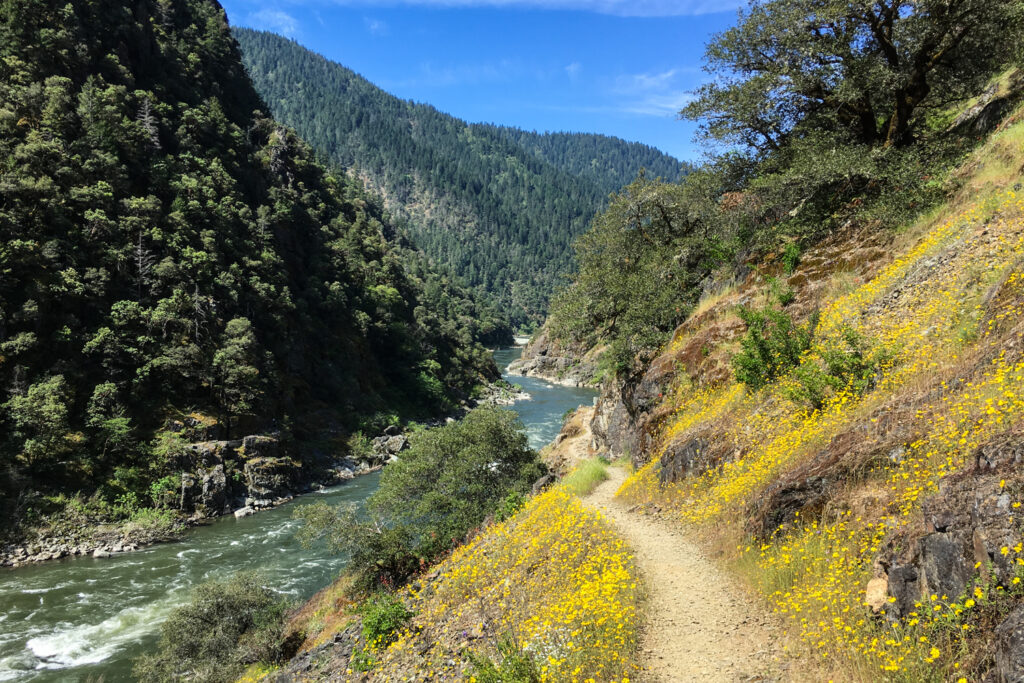
Bugs and Poison Oak
Mosquitoes enjoy life along the Rogue, but the dry summer climate generally limits their numbers compared to other PNW trails. Use a combination of Permethrin on your clothing and a small amount of 30% DEET on exposed skin when you need full protection.
Poison Oak is abundant along the Rogue River Trail. It’s seriously all over the place, so make sure you know how to identify poison oak and avoid it at all costs. We suggest wearing long pants on this trail and bringing a small amount of calamine lotion in case of contact. Going to the bathroom in the woods is usually when people accidentally brush by it, so be on the lookout!
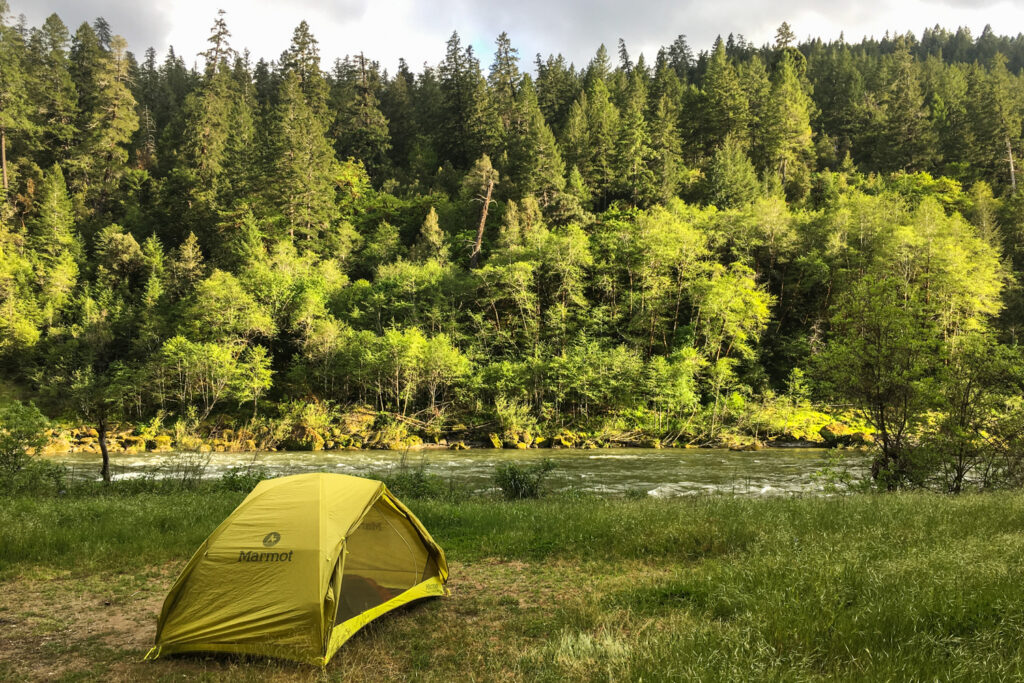
Gear List
Make sure to check out our Ultimate Backpacking Checklist so you don’t forget something important.
Below you’ll find our current favorite backpacking gear. If you want to see additional options, our curated gear guides are the result of many years of extensive research and hands-on testing by our team of outdoor experts.
BACKPACK
- Best Backpacking Pack Overall: REI Flash 55 – Men’s / REI Flash 55 – Women’s
- Best Ultralight Backpacking Backpack: Hyperlite Mountain Gear Unbound 40
- More: Check out our best backpacking backpacks guide for ultralight and trekking options
TENT
- Best Backpacking Tent Overall: Big Agnes Copper Spur HV UL2
- Best Ultralight Tent: Zpacks Duplex
- Best Budget Tent: REI Half Dome SL 2+
- Best Tent Stakes Overall: All One Tech Aluminum Stakes
- More: Check out our best backpacking tents guide for more options
SLEEPING BAG/QUILT
- Best Sleeping Bag Overall: Men’s Feathered Friends Swallow YF 20 / Women’s Feathered Friends Egret YF 20
- Best Quilt Overall: Enlightened Equipment Revelation 20
- More: Check out our best backpacking sleeping bags guide and best backpacking quilts guide for more options
SLEEPING PAD
- Best Sleeping Pad Overall: NEMO Tensor All-Season
- Best Foam Sleeping Pad: NEMO Switchback
- More: Check out our best backpacking sleeping pads guide for ultralight and trekking options
CAMP KITCHEN
- Best Backpacking Stove Overall: MSR PocketRocket 2
- Best Backpacking Cookware Overall: TOAKS Titanium 750ml
- Best Backpacking Coffee Overall: Starbucks VIA
- More: Check out our best backpacking stoves guide and best backpacking cookware guide for ultralight and large group options
WATER & FILTRATION
- Best Water Filter Overall: Sawyer Squeeze
- Best Hydration Bladder Overall: Gregory 3D Hydro
- Best Backpacking Water Bottles: Smartwater Bottles
- More: Check out our best backpacking water filters guide and best backpacking water bottles guide for ultralight and large group options
CLOTHING
- Best Hiking Pants Overall: Men’s Outdoor Research Ferrosi / Women’s The North Face Aphrodite 2.0
- Best Hiking Shorts Overall: Men’s Patagonia Quandary / Women’s Outdoor Research Ferrosi
- Best Women’s Hiking Leggings: Fjallraven Abisko Trekking Tights HD
- Best Rain Jacket Overall: Men’s Patagonia Torrentshell 3L / Women’s Patagonia Torrentshell 3L
- Best Rain Pants: Men’s Patagonia Torrentshell 3L / Women’s Patagonia Torrentshell 3L
- Best Down Jacket Overall: Men’s Patagonia Down Sweater Hoodie / Women’s Patagonia Down Sweater Hoodie
- Best Fleece Jacket Overall: Men’s Patagonia Better Sweater / Women’s Patagonia Better Sweater
- Best Sunshirt Overall: Men’s Outdoor Research Echo / Women’s Outdoor Research Echo
- Best Socks Overall: Men’s Darn Tough Light Hiker Micro Crew / Women’s Darn Tough Light Hiker Micro Crew
- Beste Ultralight Liner Glove: Patagonia Capilene Midweight Liner
- More: Check out our best backpacking apparel lists for more options
FOOTWEAR & TRACTION
- Best Hiking Shoes Overall: Men’s HOKA Speedgoat 6 / Women’s HOKA Speedgoat 6
- Best Hiking Boots Overall: Men’s Salomon X Ultra 4 GTX / Women’s Lowa Renegade GTX
- Best Hiking Sandals Overall: Men’s Chaco Z/1 Classic / Women’s Chaco Z/1 Classic
- Best Camp Shoes Overall: Crocs Classic Clogs
- Best Traction Device for Hiking Overall: Kahtoola MICROspikes
- More: Check out our best backpacking footwear lists for more options
NAVIGATION
- Best GPS Watch Overall: Garmin Instinct 2 Solar
- Best Personal Locator Beacon (PLB): Garmin inReach Mini 2
- More: Check out our article How to Use Your Phone as a GPS Device for Backpacking & Hiking to learn more
FOOD
FIRST-AID & TOOLS
- Best First-Aid Kit Overall: Adventure Medical Kits Ultralight/Watertight .7
- Best Pocket Knife Overall: Kershaw Leek
- Best Multitool Overall: Leatherman Wave+
- Best Headlamp Overall: Black Diamond Spot 400-R
- Best Power Bank Overall: Nitcore NB 10000 Gen 3
- More: Check out our best first-aid Kit guide, best pocket knife guide, best multitool guide, best backpacking headlamps guide, and best power banks guide for more options
MISCELLANEOUS
- Best Trekking Poles Overall: Black Diamond Pursuit
- Best Backpacking Chair Overall: REI Flexlite Air
- Best Backpacking Stuff Sack Overall: Hyperlite Mountain Gear Drawstring
- More: Check out our best trekking poles guide, best backpacking chairs guide, and best stuff sacks guide for more options
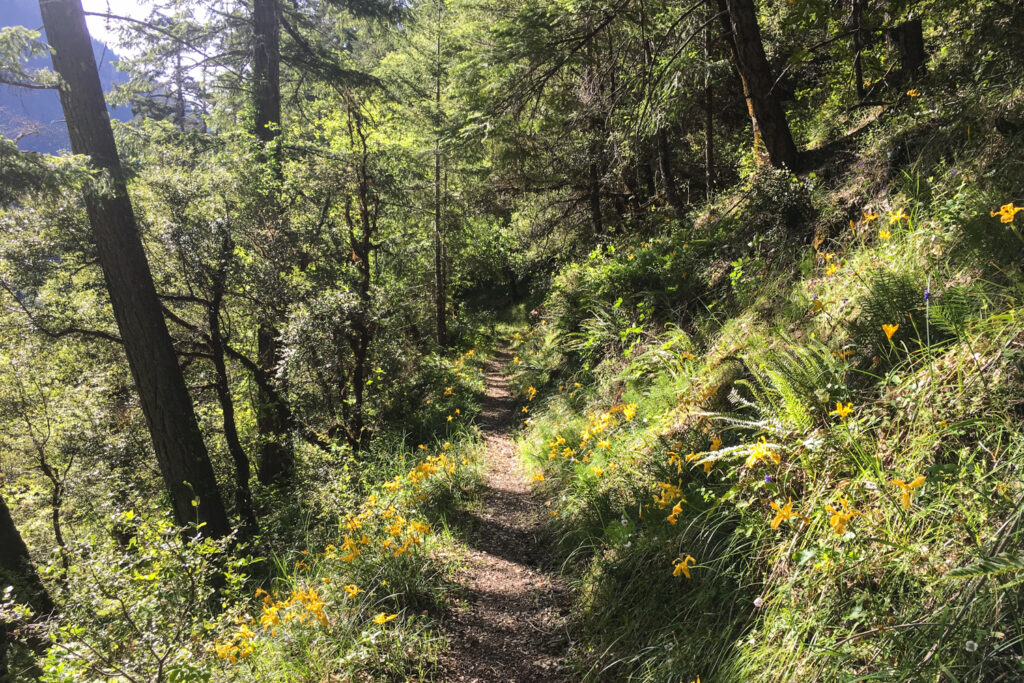
Leave No Trace
Preserving our wilderness and minimizing human impact is vital to its health. A campfire or improper disposal of human waste, leftovers, and graywater has a substantial cumulative impact.
Thousands of hikers, anglers, and boaters share these lands each year. Enjoying the flora and fauna comes with a personal responsibility to minimize human intrusion. Taking just a few moments to familiarize yourself with Leave No Trace principles before heading out can have a lasting positive impact.
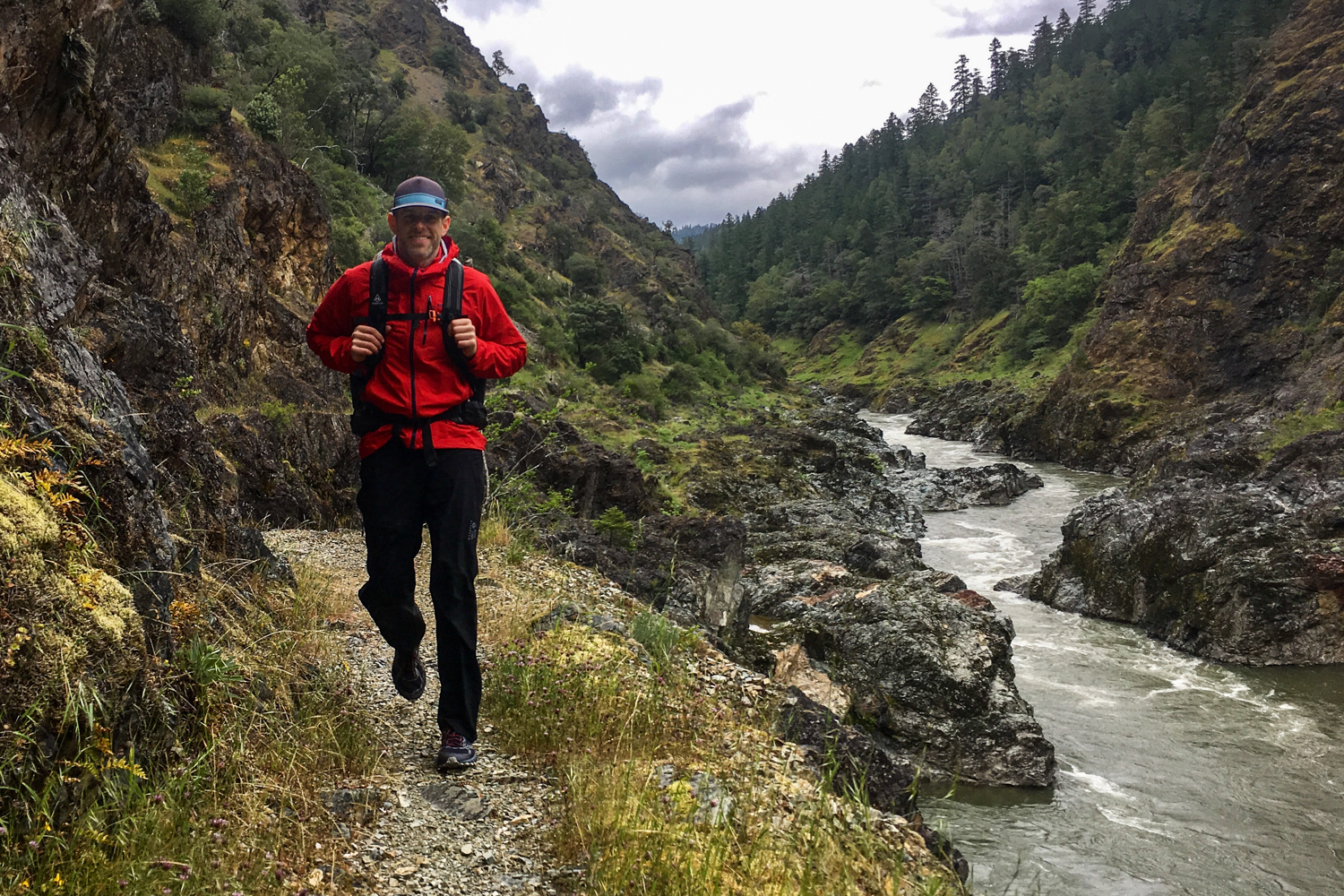
More Information
We hope this guide inspires you to plan a memorable journey along the Rogue River Trail.



